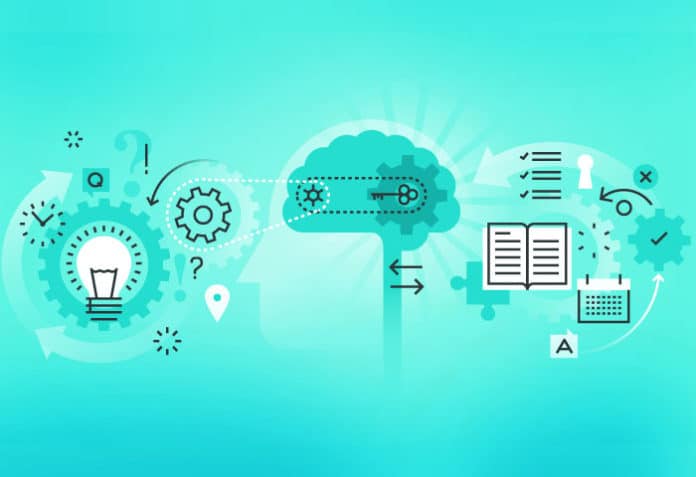Artificial intelligence and machine learning are impacting nearly every industry today. This article underlines the various ways in which these are being used in our everyday lives and how some open source cloud platforms are enabling their deployment.
The goal of artificial intelligence (AI) is to construct machines and automated systems that are able to mimic human cognition. On a global scale, AI is transforming societies, politics, and economies in a variety of ways. Examples of the applications of AI include Google Help, Siri, Alexa, and self-driving cars like Tesla.
Today, AI is being used to solve difficult problems in an effective manner in a wide range of industries. It is being used in the healthcare industry to make more accurate and faster diagnoses than humans. Doctors can use AI to diagnose a disease, and get an alert when a patient’s condition is deteriorating.
Data security is critical for every business, and the number of cyberattacks is continually increasing. Using artificial intelligence, the security of data can be improved. An example of this is the integration of intelligent bots to identify software bugs and cyberattacks.
Twitter, WhatsApp, Facebook and Snapchat are just a few of the social media platforms that store and manage billions of profiles by using AI algorithms. AI can arrange and sift through massive amounts of data to find the latest trends, hashtags, and needs of various people.
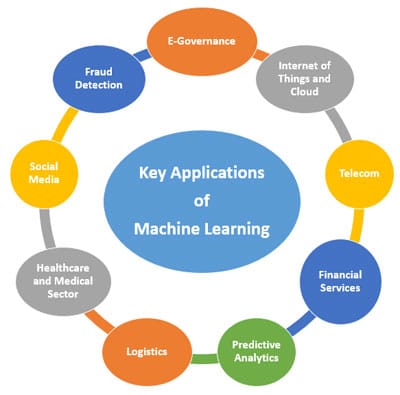
The tourism industry is becoming increasingly reliant on AI, as the latter can help with a variety of travel-related tasks including booking hotels, flights, and the best routes for consumers. For better and faster customer service, chatbots driven by artificial intelligence are being used in the travel industry.
Table 1: Tools and frameworks for machine learning
| Tool/Platform | URL |
| Streamlit | https://github.com/streamlit/streamlit |
| TensorFlow | https://www.tensorflow.org/ |
| PyTorch | https://pytorch.org/ |
| scikit-learn | https://scikit-learn.org/ |
| Apache Spark | https://spark.apache.org/ |
| Torch | http://torch.ch/ |
| Hugging Face | https://huggingface.co/ |
| Keras | https://keras.io/ |
| TensorFlowJS | https://www.tensorflow.org/js |
| KNIME | https://www.knime.com/ |
| Apache Mahout | https://mahout.apache.org/ |
| Accord | http://accord-framework.net/ |
| Shogun | http://shogun-toolbox.org/ |
| RapidMiner | https://rapidminer.com/ |
| Blocks | https://github.com/mila-iqia/blocks |
| TuriCreate | https://github.com/apple/turicreate |
| Dopamine | https://github.com/google/dopamine |
| FlairNLP | https://github.com/flairNLP/flair |
Machine learning in different domains
All techniques and tools that let software applications and gadgets respond and develop on their own are referred to as machine learning (ML). AI can learn without really being explicitly programmed to perform the required action, thanks to machine learning techniques. Rather than relying on predefined computer instructions, the ML algorithm learns a pattern from sample inputs, and then anticipates and executes tasks completely based on the learned pattern. If rigorous algorithms aren’t an option, machine learning can be a life-saver. It will pick up the new procedure by analysing prior ones and then putting it into action. ML has cleared the way for technical advancements and technologies that were previously unimaginable in a variety of industries. It is used in a variety of cutting-edge technologies today — from predictive algorithms to Internet TV live streaming.
A notable ML and AI technique is image recognition, which is a method for categorising and detecting a feature or an item in a digital image. Classification and face recognition are done using this method.

The use of machine learning for recommender systems is among its most widely used and well-known applications. In today’s e-commerce world, product recommendation is a prominent tool that utilises powerful machine learning techniques. Websites use AI and ML to keep track of past purchases, search trends, and shopping cart history, and then generate product recommendations based on that data.
There is a lot of interest in employing machine learning algorithms in the healthcare industry. Emergency room wait times can be predicted across multiple hospital departments by using an ML algorithm. Details of staff shifts, patient data, and recordings of department discussions and emergency room layouts are all used to help create the algorithm. Machine learning algorithms can be used for detecting a disease, planning treatments, and prognostication.
| Key features of the cloud platforms used for machine learning |
|
Cloud based deployment of AI and ML applications
The applications of AI and ML can be deployed on cloud platforms. A number of cloud service providers nowadays enable programmers to build models for effective decision-making in their domain.
These cloud based platforms are integrated with pre-trained machine learning and deep learning models on which the applications can be deployed without any coding or with minimum scripting.
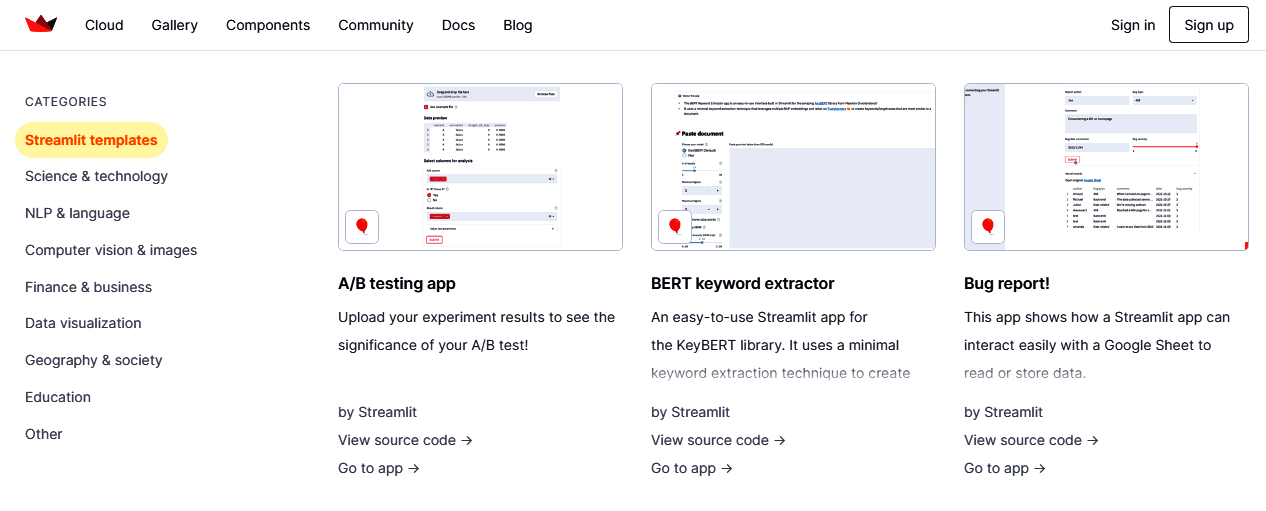
Streamlit: Streamlit gives data scientists and ML experts access to assorted machine learning models. It is open source and compatible with cloud deployments. The ML models can be made ready to be used with data sets in a few moments.
Streamlit provides a range of machine learning models and source code in multiple categories including natural language processing, geography, education, computer vision, etc.
Streamlit provides a range of machine learning models and source code in multiple categories including natural language processing, geography, education, computer vision, etc.
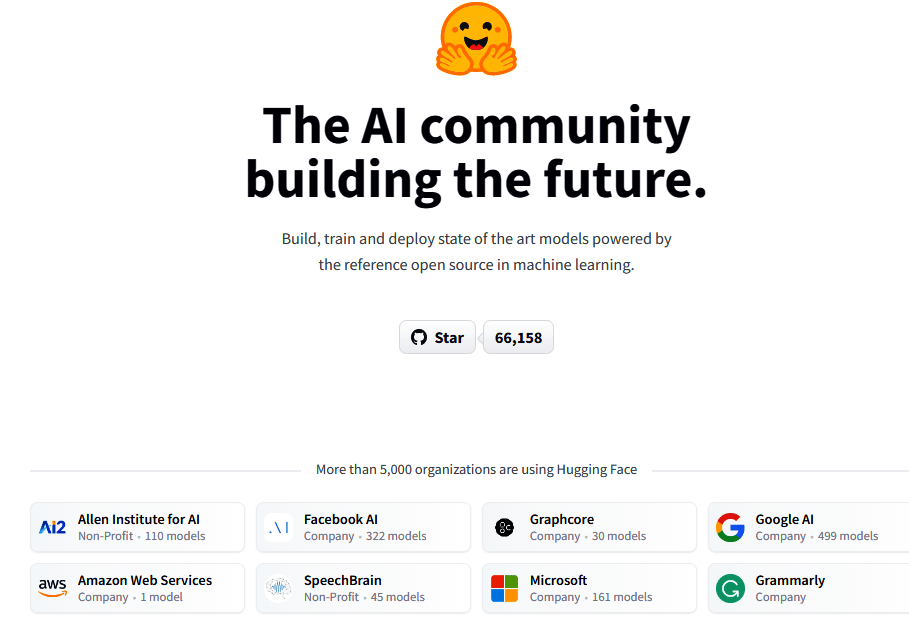
Hugging Face: This is another platform with pre-trained models and architectures for ML and AI in a range of categories. Many corporate giants are using this platform including Facebook AI, Microsoft, Google AI, Amazon Web Services, and Grammarly.
A number of pre-trained and deployment-ready models are available in Hugging Face for different applications including natural language processing and computer vision.
The following tasks can be carried out by using the ML models in Hugging Face:
- Audio-to-audio processing
- Automatic speech recognition
- Computer vision
- Fill-mask
- Image classification
- Image segmentation
- Object detection
- Answering of questions
- Sentence similarity
- Summarisation
- Text classification
- Text generation
- Text-to-speech translation
- Token classification
- Translation classification
The problem solvers available in Hugging Face are optimised and effective, helping models to be deployed rapidly (Figure 5).
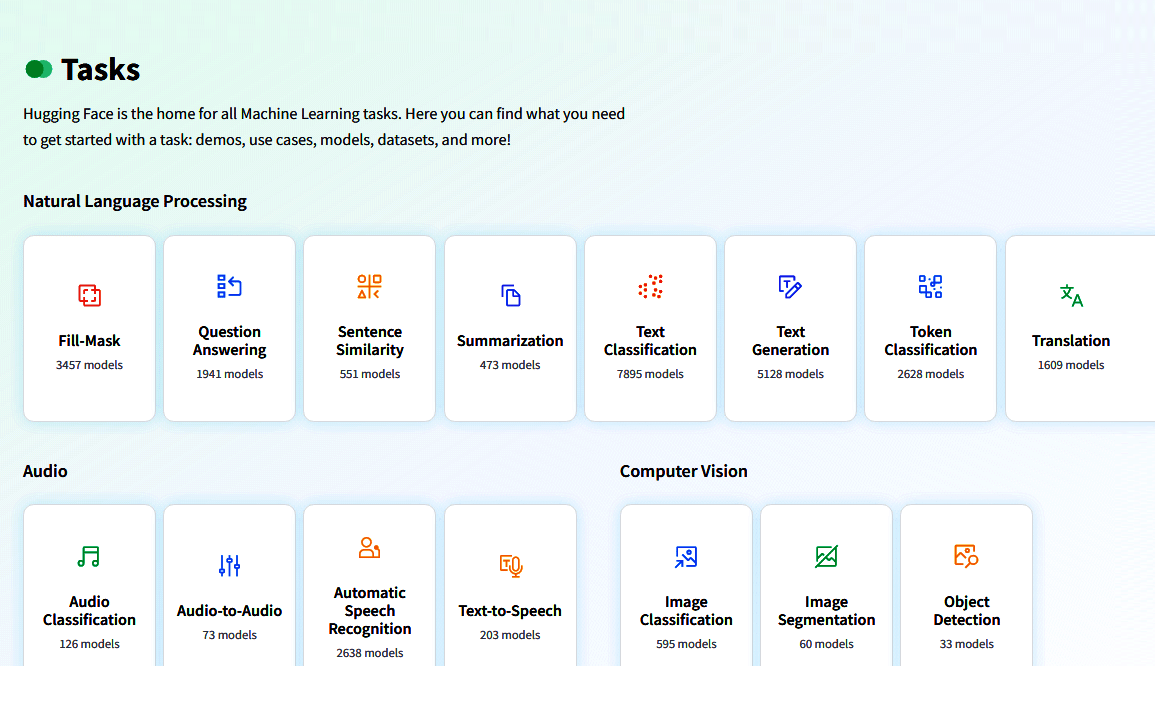
These cloud based platforms are useful for researchers, practitioners and data scientists in multiple domains, and simplify the development of real-world applications that perform well.






























































